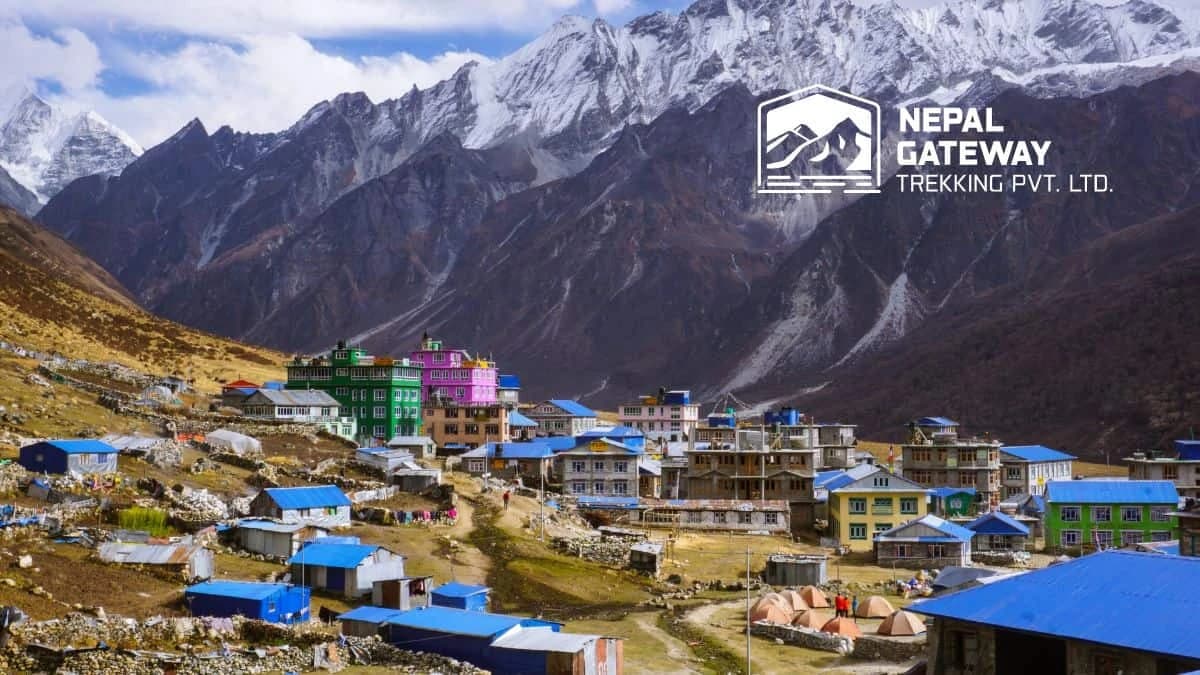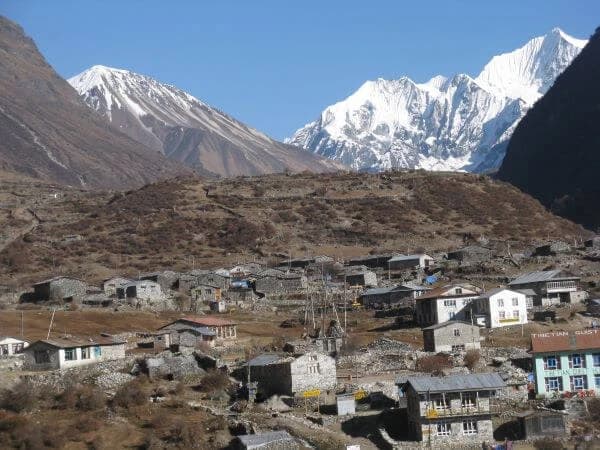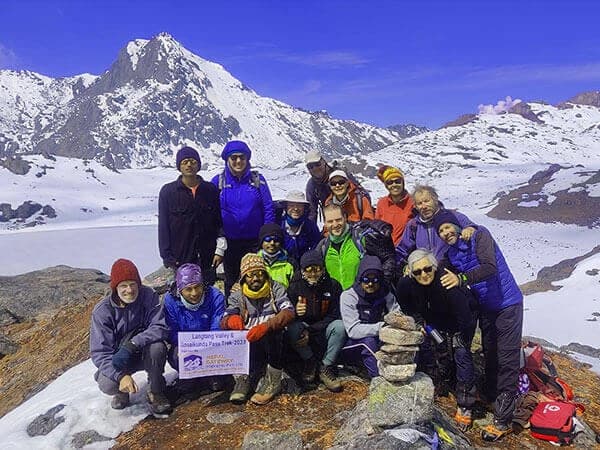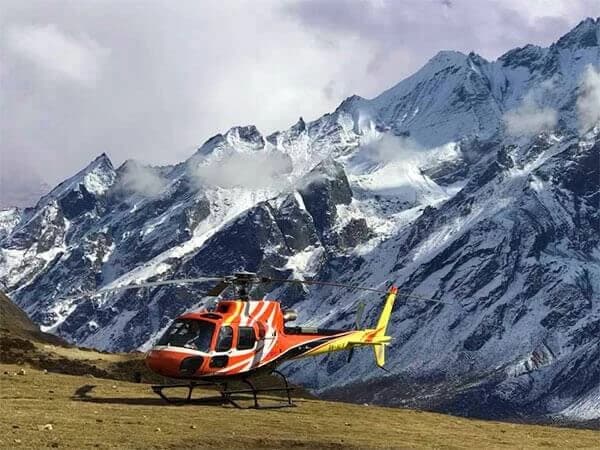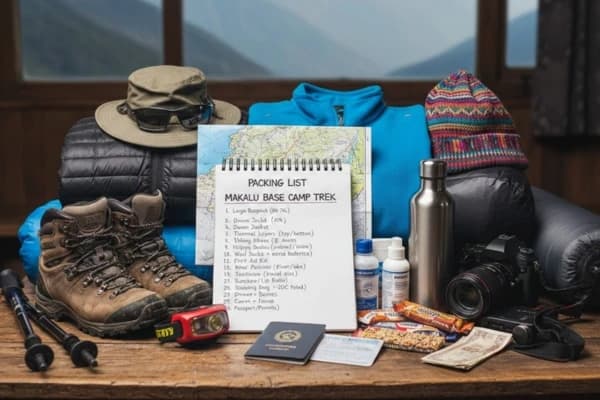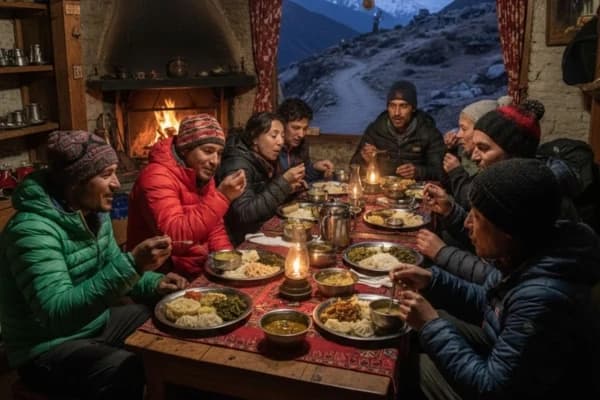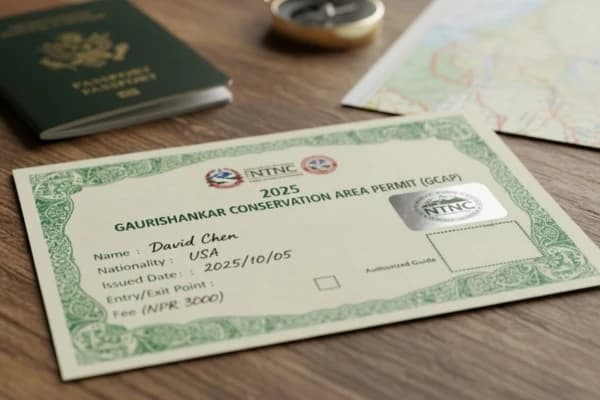Suppose you're craving a Himalayan adventure that's not too far from Kathmandu, yet still rich in culture, stunning views, and unforgettable experiences. In that case, the Langtang Trek is just what you need.
Picture yourself walking through misty pine forests, crossing suspension bridges high above rushing rivers, and arriving in remote mountain villages where life has remained untouched for centuries.
As you journey toward Langtang Valley, you’ll experience more than just a trek—you’ll feel a deep connection to both nature and the local culture in ways that will stay with you long after the adventure ends.
You will learn all you need to know about the Langtang Valley Trek from this in-depth guide. From the best time to go, to what to pack, and even whether it’s safe for solo female trekkers, we’ve got you covered. Let’s dive in!
What Makes the Langtang Valley Trek Unique Among Nepal's Treks?
Langtang Valley Trek stands out among Nepal’s many trekking options for several reasons that will make your journey unforgettable:
- Proximity to Kathmandu: Just 80 kilometres from the capital, it’s one of the easiest treks to access. You get to experience the Himalayas without the long travel times that come with other treks.
- Cultural Immersion: This trek is also a cultural adventure. You'll meet the Tamang people, whose hospitality will touch your heart, and experience a mix of Nepali and Tibetan traditions that make the region so vibrant.
- Breathtaking Views: The trek offers mesmerising views of Langtang Lirung, Dorje Lakpa, and other snow-capped peaks. Imagine waking up to these towering giants right outside your window!
- Wildlife & Flora: Red pandas, Himalayan monals, and lush rhododendron woods can all be found in Langtang National Park. There is plenty to see, regardless of your interest in plants or animals.
Langtang’s magic lies not only in its natural beauty but also in the peaceful, off-the-beaten-path experience it offers. It's the ideal location for connecting with nature and oneself, away from the crowds on more well-travelled trekking paths.

When Is the Best Time to Do the Langtang Valley Trek?
The right season can turn your trekking experience from great to extraordinary. Here’s what to expect in different seasons:
- Spring (March to May): This is arguably the best time for the Langtang Valley trek. The forests are bursting with vibrant blooms, the weather is comfortably mild, and the skies are clear, which offers breathtaking views of the surrounding mountains.
- Autumn (September to November): It's another great season. The skies are crystal clear, the weather is excellent, and the trail is generally dry, making it ideal for walking.
- Winter (December to February): Winter is quiet, snowy, and serene. However, it’s cold, and the higher altitudes can get tough. Only recommended for experienced trekkers.
- Monsoon (June to August): This is not the best time for the Langtang Valley Trek. The trails are slippery, and there’s a risk of landslides. Plus, the stunning mountain views are often covered by clouds.
If you’re aiming for a trek with great weather, wildflowers, and panoramic views, spring and autumn are your best bet.
Recommeded Package: Langtang Tamang Heritage Trek
What Permits Are Required for the Langtang Valley Trek?
To trek in Langtang Valley, you'll need two essential permits:
- Langtang National Park Entry Permit – NPR 3,000 (about USD 25)
- TIMS (Trekkers' Information Management System) Card– NPR 2,000 (around USD 17)
Both permits help conserve the region's natural beauty and support local communities. You can easily obtain them in Kathmandu, either from the Nepal Tourism Board or through a registered trekking agency.
How Difficult Is the Langtang Valley Trek?
Langtang is considered a moderate trek, so you don’t need to be a seasoned mountaineer to take it on. But it does require a bit of fitness and stamina.
- Daily Hiking Time: 5–7 hours of trekking.
- Altitude Gain: The highest point, Tserko Ri, reaches 4,984 meters (16,355 feet).
- Terrain: Mostly well-maintained trails, but there are some steep sections.
While it's accessible for beginners, it’s essential to prepare in advance—make sure you’re comfortable with long days of walking and steady climbing. Families, beginner hikers, and anyone looking to challenge themselves without feeling overwhelmed may find this walk to be a great option.
If you find trekking difficult, Nepal Gateway Trekking also offers a Langtang Helicopter Day Tour for you.
Is the Langtang Valley Trek Safe for Solo Female Travellers?
Langtang is one of the safest treks in Nepal, especially for solo female trekkers. Here's why:

- Friendly Locals: The Tamang people are known for their warmth and hospitality, and you'll often feel like you’re trekking through a big family.
- Clear Trails: Langtang has well-marked paths, and you’re never too far from the local teahouses or villages.
- Guides Available: If you prefer, you can hire a local female guide, which adds an extra layer of security and cultural richness to your trip.
Of course, always practice basic safety precautions—such as sticking to the trails, staying in well-populated teahouses, and keeping loved ones updated on your progress. For many solo female trekkers, Langtang becomes a place of empowerment, peace, and connection.
What is the Standard Itinerary for the Langtang Valley Trek?
Here’s a 10-day itinerary for the Langtang Valley Trek as given by the Nepal Gateway trekking teams:
- Day 01: Arrival in Kathmandu (1,310 m) and transfer to the Hotel. Duration: 20 minutes drive
- Day 02: Drive from Kathmandu to Syabru Besi (1,460 m). Duration: 7-8 hours driving
- Day 03: Trek Syabru Besi to Lama Hotel (2,470 m). Duration: 5 hours walking
- Day 04: Trek Lama Hotel to Langtang Village (3,430 m). Duration: 6-7 hours walking
- Day 05: Trek Langtang Village to Kyanjin Gompa Village (3,860 m). Duration: 3 hours walking
- Day 06: Hike up to Tserko Ri (5,030 m) and back to Kyanjin Gompa. Duration: 6-7 hours walking
- Day 07: Trek back Kyanjin Gompa to Lama Hotel (2,470 m). Duration: 6-7 hours walking
- Day 08: Trek back Lama Hotel to Syabru Besi (1,460 m). Duration: 5-6 hours walking
- Day 09: Drive back Syabru Besi to Kathmandu (1,310 m). Duration: 7-8 hours driving
- Day 10: Departure
Feel free to modify it based on your pace, fitness level, and if you want to add side trips like visiting the Tamang Heritage Trail or Langtang Gosaikunda Lake.
What Are the Accommodation and Food Options Along the Trek?
When hiking the Langtang Valley you can find inviting and cozy teahouses to rest and recover after each trekking day.
Food Options Along the Langtang Valley Trek
The teahouses along the trek serve a variety of meals to keep trekkers energised.
- Nepali Cuisine: The staple meal is dal bhat, a hearty lentil soup served with rice, vegetables, and a side of tangy pickles, offering a taste of traditional Nepali cuisine. Other popular dishes include momos (dumplings), thukpa (noodle soup), and chowmein (fried noodles).
- Western Dishes: Many teahouses also offer Western-style meals such as pasta, spaghetti, fried rice, and even pizza, especially in higher-altitude areas.
- Breakfast Options: Common breakfast items include porridge, pancakes, and Tibetan bread.
- Cost: Meals cost between $5 and $15, depending on the item and amount, so it's easy to enjoy local food without going over budget.
Electricity and Charging Facilities
Access to electricity varies along the trek.
- Lower Elevations: In places like Syabrubesi and Lama Hotel, some teahouses offer electricity, allowing trekkers to charge their devices in their rooms or common areas.
- Higher Elevations: The availability of electricity decreases with height. The majority of teahouses rely on small hydroelectric systems or solar power, both of which can be unreliable. There may be an additional charge for charging electronics, often $3 per hour.
- Recommendations: To make sure your electronics stay charged during the hike, it's a good idea to include a power bank.
The Teahouse Experience
Langtang Valley Trek teahouses offer shelter, but they offer more than that; they offer a community. After a long and challenging day on the trail, you'll enjoy the welcoming, homey feel of these teahouses.
The warmth from the fire, the comforting aroma of freshly prepared meals, and the chance to swap stories with fellow trekkers create an atmosphere that turns each night into a memorable part of your journey.
Should You Trek Independently or Hire a Guide and Porter?
While you can choose to trek the Langtang Valley on your own, hiring a guide and/or porter comes with several benefits. A guide can help navigate the trails, share local knowledge, and ensure you stay safe, while a porter can carry your heavy bags, making the trek much more enjoyable and manageable.
- Going Solo: It’s cost-effective and gives you flexibility, but requires self-reliance, especially at higher altitudes.
- With a Guide: A guide improves your experience and aids with trail navigation by adding safety, local knowledge, and cultural insights.
- With a Porter: A porter lightens your load, making the trek easier, particularly on steeper sections and higher altitudes.
Employing a guide or porter helps the villages along the trail and the local economy. In the end, it comes down to how independent and convenient you want the Langtang Valley walk to be.
What Are the Costs Associated with the Langtang Valley Trek?
Here’s an approximate breakdown of the costs you can expect for a 9-day trek:
- Permits: USD 25
- Transport: USD 25–30 (round-trip Kathmandu to Syabrubesi)
- Accommodation & Food: USD 40–50 per day
- Guide: USD 25–30/day
- Porter: USD 20–25/day
In total, the Langtang Valley Trek typically costs around USD 500 to 800, depending on how you travel, where you stay, and whether you're going independently or with a trekking company. This includes permits, transportation, meals, accommodation, and any extras like guides or porters.
If you're looking for a well-organized and hassle-free experience, Nepal Gateway Trekking offers a Langtang Valley Trek package starting at USD 760 per person. The price varies based on your group size—for 2 to 4 people, it’s around USD 700 per person, and for larger groups of 5 to 10 trekkers, the price drops to about USD 660 per person.
These packages generally cover everything from permits and accommodation to meals, transportation, and a professional guide, making them a great value for the level of service you receive.
What Should You Pack for the Langtang Valley Trek?
Packing smart for the Langtang Valley Trek ensures a safe and comfortable adventure. While you want to travel light, missing out on essentials can make things tough on the trail. Here's a quick checklist to help you get it right:
- Trekking Boots: Well-fitted, broken-in, and waterproof boots are a must for rocky trails.
- Warm Clothing: A down jacket, fleece layers, thermal innerwear, and a good-quality hat and gloves. It gets chilly, especially at higher altitudes.
- Rain Gear: A lightweight poncho or rain jacket is handy, especially during unexpected showers.
- Sunscreen, Sunglasses & Lip Balm: The mountain sun is intense—protect your skin and eyes.
- Water Bottle + Purification Tablets or Filter: Hydration is key, and water sources aren’t always clean.
- First Aid Kit: Include essentials like band-aids, antiseptic cream, pain relievers, and altitude sickness medication.
- Toiletries & Wet Wipes: Bring biodegradable soap, toilet paper, hand sanitiser, and quick-dry towels.
- Headlamp or Flashlight: Power cuts happen—don’t rely solely on your phone.
- Snacks & Energy Bars: Great for a quick energy boost between meals.
- Power Bank: Some teahouses charge extra for electricity, so carry a fully charged one.
- Trekking Poles (Optional): Helpful for balance and reducing pressure on knees.
With the right gear, you'll feel more confident and prepared for every step of your Langtang Valley Trek.
What Are the Health and Safety Considerations?
Altitude sickness is one of the major obstacles throughout the Langtang Valley Trek, especially when you get over 3,000 meters. But don't worry, it is quite treatable if you take the proper precautions.
- Take It Slow: Your body needs time to adjust to the rising altitude. Avoid rushing—slow and steady is key.
- Stay Hydrated: To help your body cope with the thin air, drink plenty of water throughout the day.
- Rest When Needed: Listen to your body. If you're feeling dizzy, tired, or nauseous, take a break.
- Be Prepared for Emergencies: Some areas along the Langtang Valley Trek offer helicopter rescue services. Just make sure your travel insurance covers high-altitude trekking.
With a little awareness and care, you can safely enjoy every step of this breathtaking Himalayan journey.
How Can You Trek Responsibly and Support Local Communities?
Trekking in Langtang isn’t just about the adventure—it’s also about respecting the environment and culture. Here’s how:
- Don’t litter: Carry your trash back down.
- Respect local customs: Greet locals with a “Namaste” and always ask before taking photos.
- Buy local products: Stay in local lodges and eat Nepali food to support the community.
Being a responsible trekker during the Langtang Valley Trek not only protects the environment but also makes your journey more meaningful and rewarding.
How Has the Langtang Region Recovered Since the 2015 Earthquake?
The Langtang Valley Trek is a walk through strength as much as it is a beautiful adventure. Langtang Village was cruelly destroyed by the 2015 earthquake, which left many people dead and heartbroken. But the community didn’t give up.
The Langtang Valley Trek today stands as a symbol of strength and recovery. Here’s how the region has come back:
- Reconstruction of lodges and trails: Locals have renovated teahouses with more durable materials and repaired trekking trails to protect tourists.
- Improved safety measures: Early warning systems and better infrastructure now ensure safer trekking experiences.
- Community resilience and hope: The people's morale has not been shattered. Their journey is made more heartfelt by their gracious welcome.
When choosing the Langtang Valley Trek, you can help them continue their journey because every step helps maintain and sustain this healing region.
Conclusion
Langtang Valley Trek is not just a walk through beautiful landscapes, but also through your own heart. If you are a beginner trekker or an experienced one, this trek will leave you with memories that will last a lifetime.
The peace of the villagers and the valley, and the breathtaking view of the mountains, remain with you long after you have returned from trekking in Nepal.
So put on your boots, pack your bags, and prepare for an adventure that will change your life. Langtang is waiting. Contact Nepal Gateway Trekking for a customised trip.
FAQ's
How long is the Langtang Valley Trek?
The Langtang Valley Trek typically takes 7 to 10 days, depending on your trekking pace, acclimatization needs, and whether you choose to explore side trails like Kyanjin Ri or Tserko Ri. The standard itinerary covers the round-trip from Syabrubesi to Kyanjin Gompa and back.
Some trekkers stretch it out to enjoy the scenery more leisurely or to spend an extra day at higher altitudes for better acclimatization. If you're tight on time or very fit, it can be done in fewer days, but most people prefer a relaxed approach to fully soak in the mountain views, forests, and villages.
Can beginners do the Langtang trek?
Absolutely. The Langtang Valley Trek is the easiest trek in Nepal. Sure, it's not a walkover—you will be climbing up and down valleys and going up over 3,800 meters—but you don't have to do any technical climbing. If you are relatively fit and okay with a day of walking 5–6 hours, then you can do this trek.
The route is well-signposted, and there are numerous teahouses en route, so it is less logistically difficult. Just be patient, drink plenty of water, and don't push the climb at altitude.
Do I need a guide for the Langtang trek?
While hiring a guide isn’t mandatory, it's highly recommended, especially if it's your first time trekking in Nepal. A knowledgeable local guide adds immense value—not just in navigating the trail, but in sharing the culture, history, and natural beauty of the region.
They can also help if you face unexpected weather, minor injuries, or altitude issues. Plus, hiring a guide directly supports the local economy, which is especially meaningful in areas still recovering from the 2015 earthquake.
Is there phone or WiFi in Langtang?
Connectivity in Langtang is limited, but not entirely absent. Some teahouses offer basic WiFi, usually for a small fee, although the signal can be weak or unreliable, especially during bad weather. Mobile networks like NTC and Ncell may work in parts of the trail—generally lower elevations or around major villages like Syabrubesi or Kyanjin Gompa.
Don’t count on staying fully connected; it's best to let loved ones know you'll be off-grid for a bit and use the opportunity to disconnect and enjoy the moment.
Are there ATMs on the Langtang trek?
No, there are no ATMs once you leave Kathmandu. You’ll need to carry enough cash to cover your entire trek—this includes accommodation, food, WiFi charges, hot showers, tips, and any extras like snacks or souvenirs. As of now, everything along the trail operates on a cash-only basis.
It's smart to carry a bit more than your estimated budget just in case. Small denominations are especially handy, as change can sometimes be limited in the mountains.
Is altitude sickness a risk in Langtang?
Yes, altitude sickness is a real risk, especially once you pass 3,000 meters. The air gets thinner, and your body needs time to adapt. Symptoms can include headaches, nausea, dizziness, and fatigue. That’s why it's crucial to acclimatize properly—don’t push too hard or gain elevation too quickly.
Most itineraries build in rest days at places like Kyanjin Gompa to help your body adjust. Drink plenty of water, eat well, and listen to your body. If symptoms get worse, descend immediately—altitude sickness isn’t something to take lightly.
